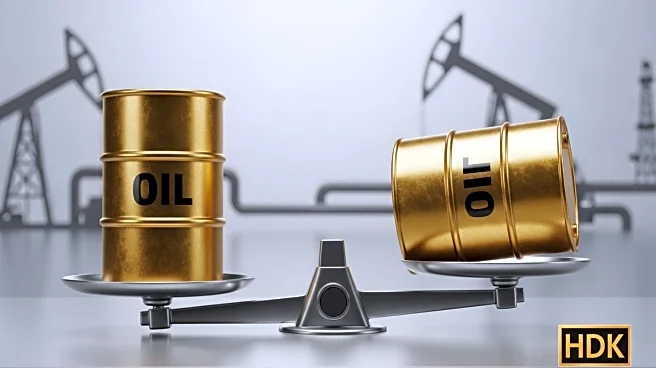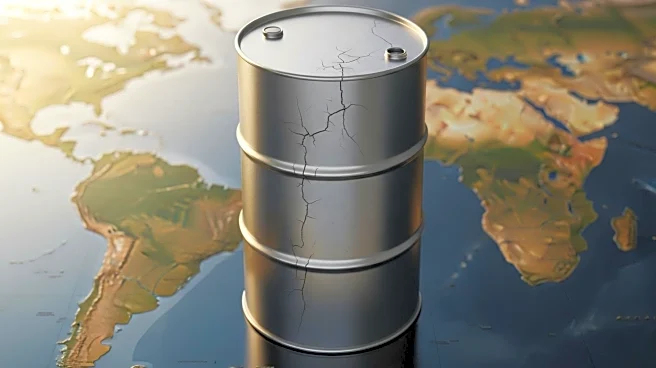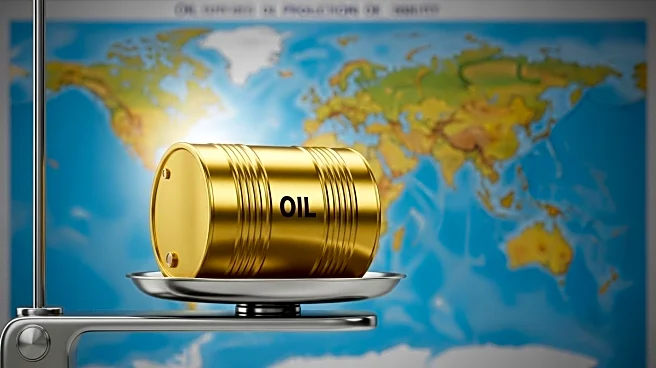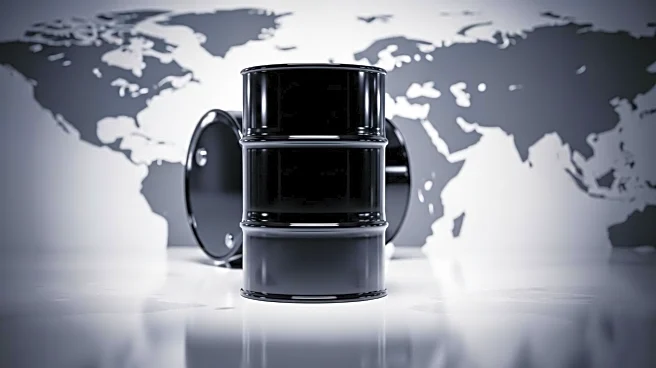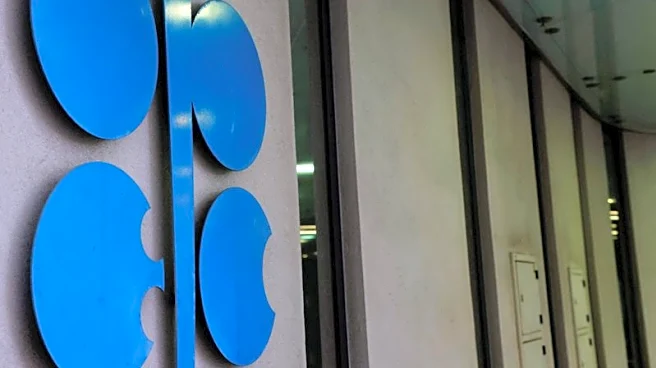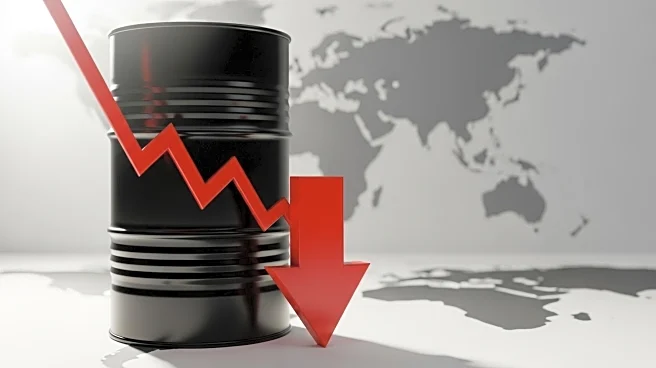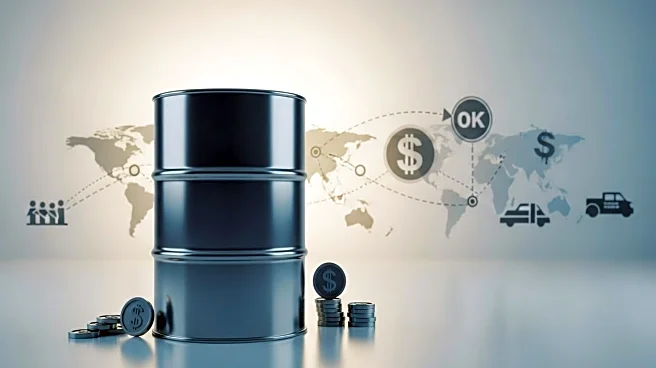What's Happening?
OPEC+ has shifted its strategy from price stabilization to market share dominance, significantly impacting global oil dynamics in 2025. The cartel accelerated the unwinding of 2.2 million barrels per day of voluntary production cuts, completed by September 2025, leading to a surge in supply. This has pushed Brent crude prices to $68.18 per barrel, with potential to fall below $49 by early 2026 if further unwinding continues. This strategic move is a response to U.S. pressure for lower gasoline prices and aims to counter non-OPEC+ producers like U.S. shale and Canadian oil sands. The International Energy Agency projects a 1.5% global crude surplus by Q4 2025, threatening demand growth and increasing price volatility.
Why It's Important?
The shift in OPEC+'s strategy poses significant risks and opportunities for investors and oil firms. The surplus-driven price drop threatens the profitability of integrated oil majors and exploration firms, especially those with high breakeven costs. Geopolitical tensions, including U.S.-China trade policy, further compound demand-side pressures. Hedge funds are adapting by using derivatives to hedge against price drops and diversifying into renewables, reflecting a broader 'peak oil demand' narrative. This trend is underscored by global clean energy investment reaching $2.2 trillion in 2025, signaling a long-term shift in capital allocation.
What's Next?
OPEC+'s September 7 meeting will be crucial, as decisions to pause or further increase output could stabilize or deepen the surplus. Investors are advised to leverage derivatives to hedge against price drops and diversify into renewables to balance exposure to oil equities. Monitoring U.S. shale production trends and China's demand recovery will be essential, as these factors could trigger OPEC+'s emergency response mechanisms.


